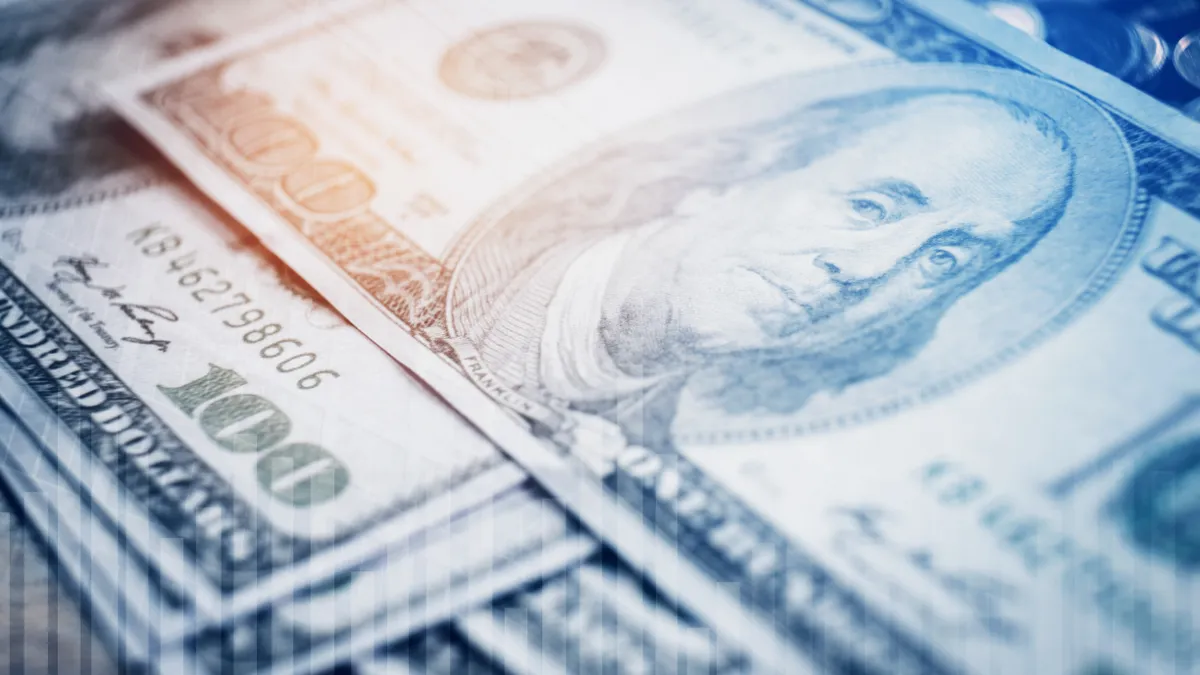Dive Brief:
- Seventy-seven percent of small businesses worry about access to capital, citing the Federal Reserve’s aggressive interest rate hikes and tightening credit caused by stress in the banking system, Goldman Sachs found in a survey.
- The findings reveal a flip from optimism to pessimism — 12 months ago 77% of small businesses voiced confidence about access to capital, Goldman Sachs said, describing results from a survey of 1,740 small businesses in 48 states. Of the 17% of respondents that applied for a new loan during the past three months, 61% faced difficulty finding affordable financing.
- Forty-four percent of small businesses believe the economy has worsened and just 15% say it has improved, Goldman Sachs said. Three out of four small businesses said that price pressures have intensified during the past three months despite the Fed’s inflation fight, and nearly half of the companies say profits have declined compared with the pre-pandemic period.
Dive Insight:
Businesses of all sizes have faced a murky credit outlook since a flare-up in banking system stress began in March. Also, during the past 14 months the Fed has raised borrowing costs to a 16-year high, increasing the federal funds rate from near zero to a range of 5% to 5.25%.
Small businesses have suffered the most from credit tightening because they disproportionately rely on the smaller banks that have faltered the most in recent months, Goldman Sachs said.
Small companies obtain nearly 70% of their commercial and industrial loans from banks with less than $250 billion in assets, and 30% from banks with less than $10 billion in assets, compared with 45% and 10%, respectively, for larger businesses, according to a separate report from Goldman Sachs Research.
Persistent inflation complicates a Fed decision on whether to pause its tightening at its next scheduled meeting June 13-14.
The Fed’s preferred measure of inflation — the core personal consumption expenditures price index excluding volatile food and energy prices — rose 0.4% in April and 4.7% from a year earlier, or more than double the central bank’s 2% inflation target, the Labor Department said Friday.
“The data that came in this morning suggests we have more work to do,” Cleveland Fed President Loretta Mester said Friday, adding that an 11th consecutive rate hike is a possible outcome from the meeting of central bank policymakers next month.
“Everything is on the table in June,” Mester said in a CNBC interview. “Inflation is still too high and it’s stubborn.”
Although the Fed’s inflation fight has so far not achieved its objectives, a pullback in credit triggered by banking turbulence may slow economic growth and override the need for more rate hikes, Fed Governor Christopher Waller said Wednesday.
“One might view the current incoming data as supporting a hike in June, but I believe that caution is warranted because there is a high level of uncertainty about how credit conditions are evolving,” Waller said in a speech.
“Another hike combined with an abrupt and unexpected tightening of credit conditions may push the economy down in a rapid and undesirable manner,” he said.
At the same time, “fighting inflation continues to be my priority,” Waller said. “I do not support stopping rate hikes unless we get clear evidence that inflation is moving down toward our 2% objective.”












